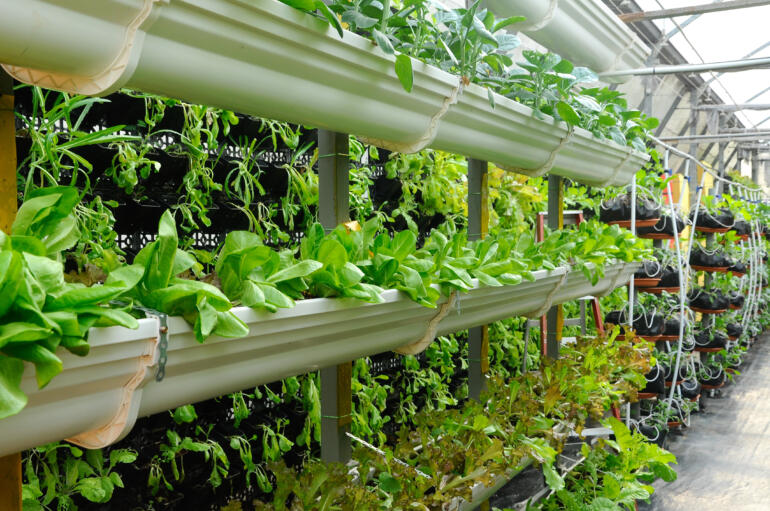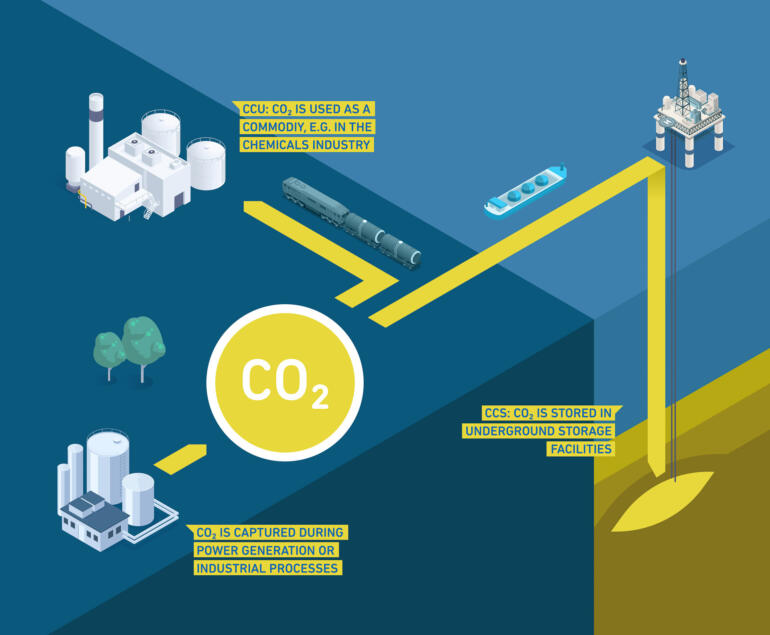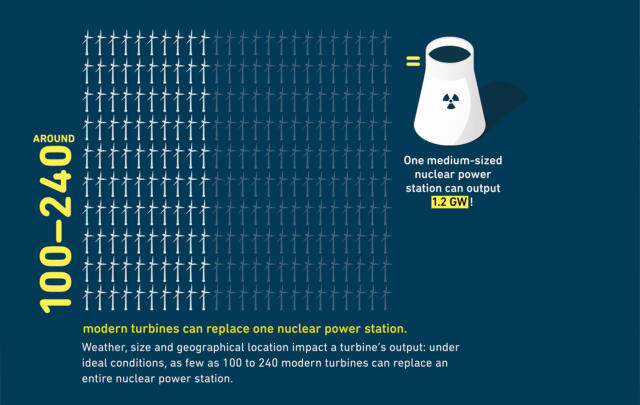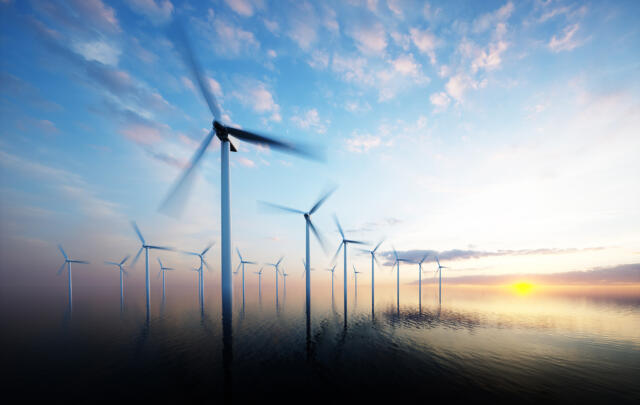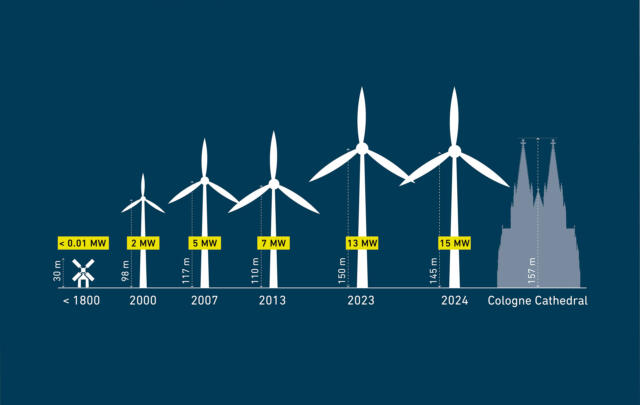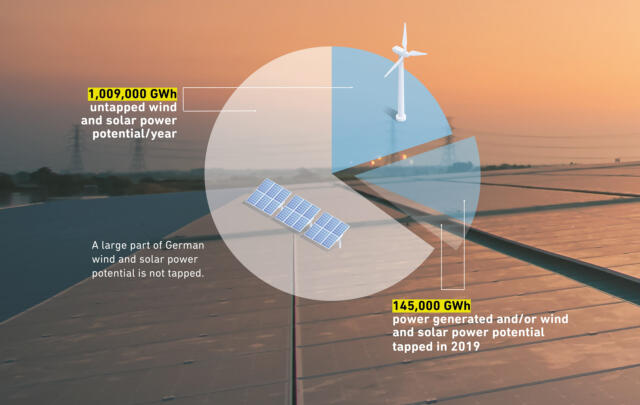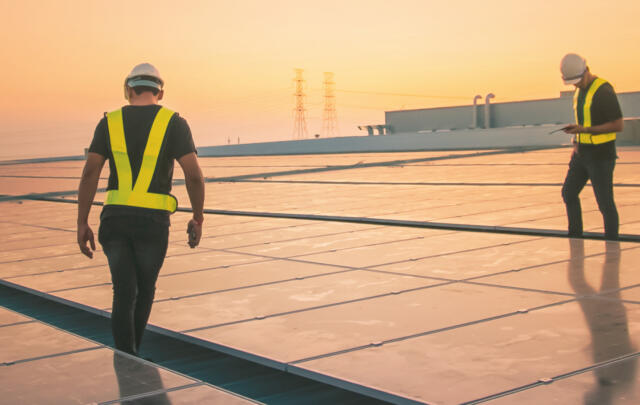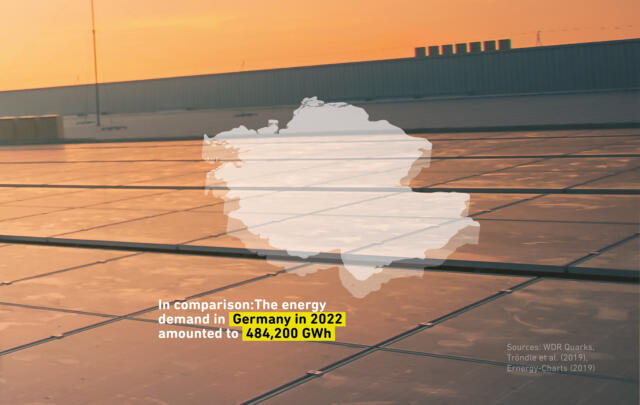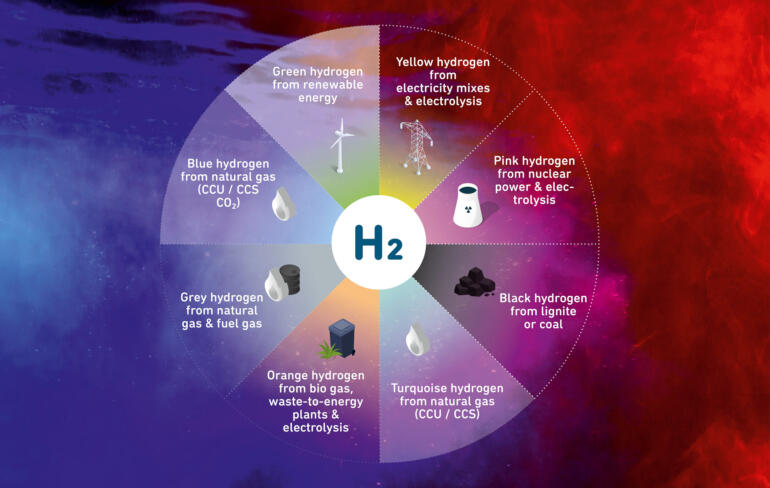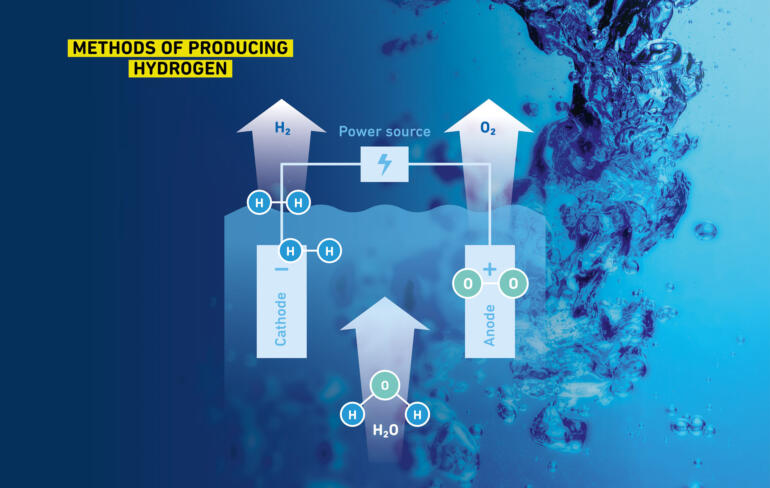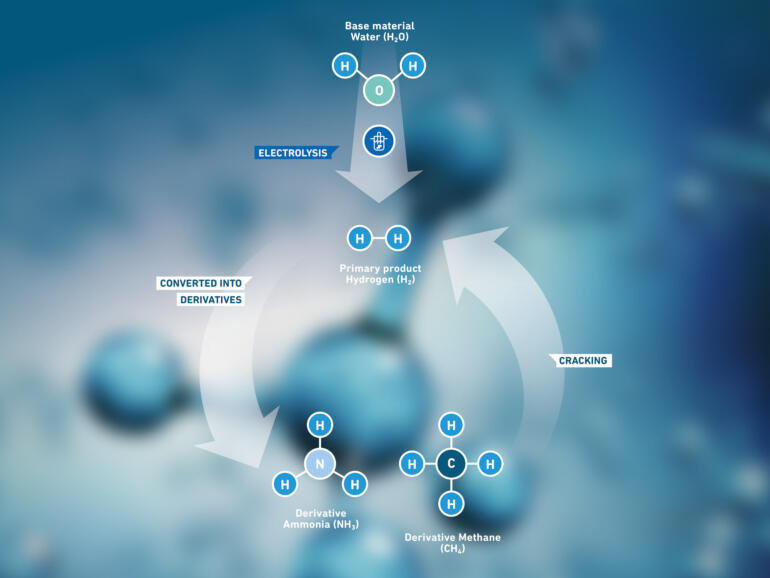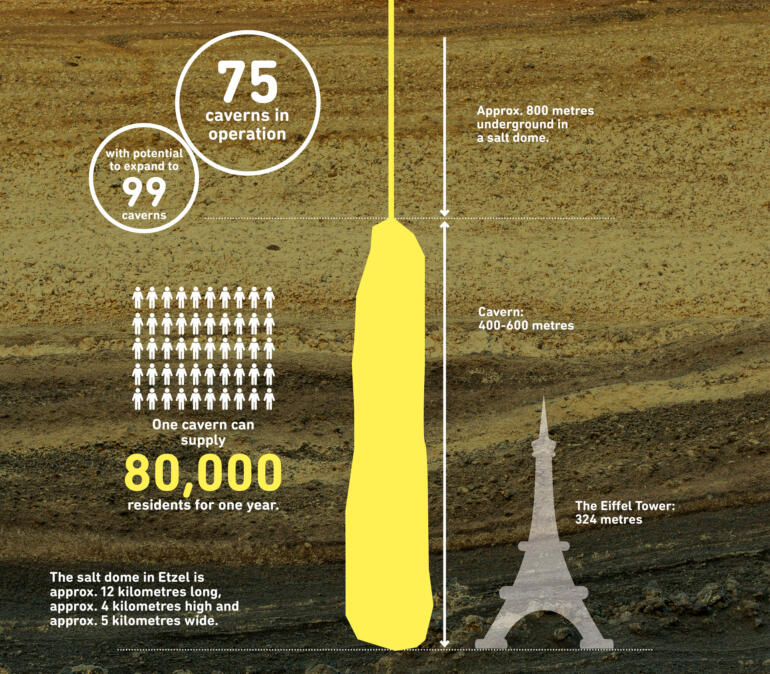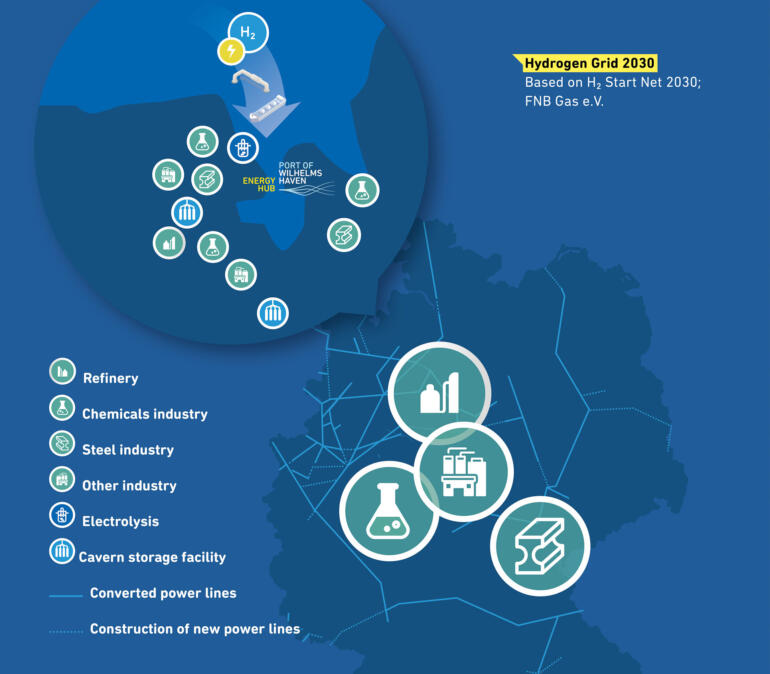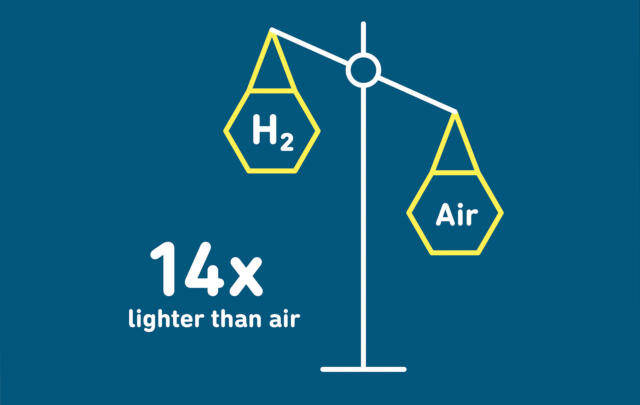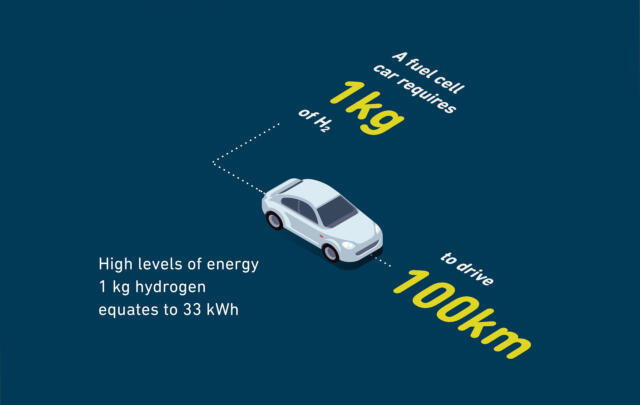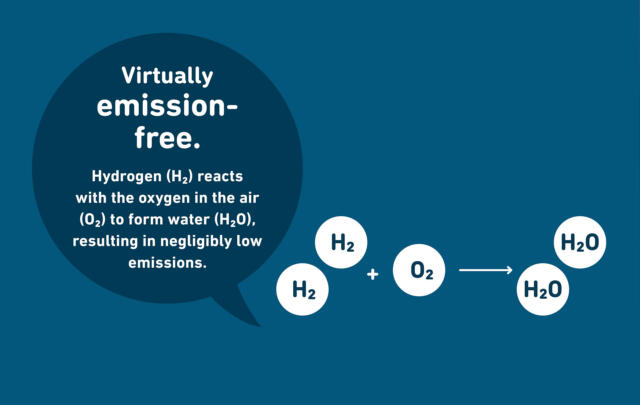
Energy Wiki
As the ENERGY HUB, Wilhelmshaven is at the heart of the transition. Whether liquefied gas, hydrogen, other molecules or renewable energy: we are the port of call for the very things that drive Germany and its industry. On this page, you will find facts and details on a range of energy issues.
CO2
The future is circular.
We can’t yet prevent the release of carbon dioxide during industrial processes. But we can manage it. As Germany will depend on CO2 exports for the time being, we are thinking ahead – and at the ENERGY HUB, we are looking at how we can export CO2 to our partner countries as well as how to tap regional recycling systems.
Carbon dioxide is the enemy. For decades, people around the world have been trying to reduce their carbon footprints – after all, this gas is a massive contributor to climate change. Because there is too much of it in the atmosphere, we need to think about how we can get it back out of there, at least in large parts. Much like plants do during photosynthesis, we need to use carbon dioxide for our own good.
The German industry converts 21 million tonnes of carbon into products every year, for example to manufacture painkillers, artificial fertiliser, outdoor clothing and car tires. 90 percent of this carbon comes from fossil sources. Here, recycled carbon is a valuable and eco-friendly alternative to oil, coal and natural gas – and could also be used as fuel and in plastic production in future.
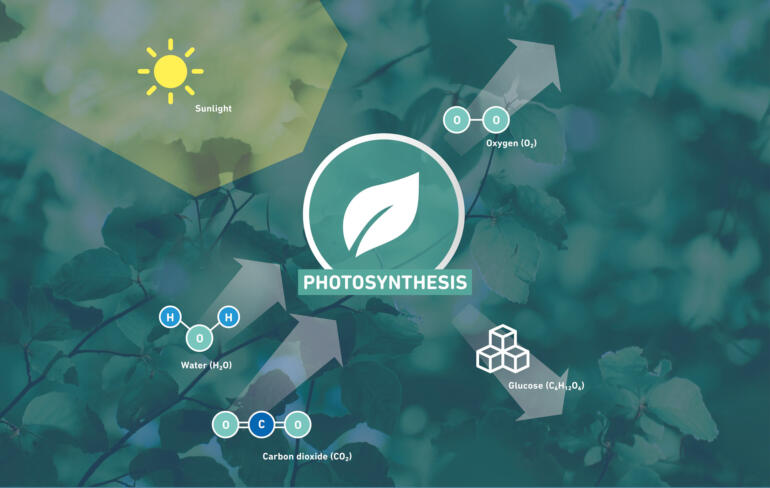
WIND POWER? WE’VE GOT IT.
Can we save nature using what it gives us? We can – by harnessing the wind. Here on the North Sea coast, that’s one thing we have in abundance: clean and boundless. The routes that lead to our region from wind farms in the German Bight, in Norway and Scotland are short: we deliver energy to the places that need it – and the rest, we store.
Even though we are not able to reach climate targets using energy generated exclusively from wind power at the moment, it still plays a key role in the energy transition: as a provider of energy to produce green hydrogen. Onshore – or even better: in the turbines themselves.
Solar power? Is on its way.
What we have in wind on our doorstep, we lack in hours of sunshine. Which is a shame, because the blazing orb provides the cheapest power available: solar energy. The required technology is becoming more and more affordable in the form of solar panels. And utilising the generated energy is becoming more and more efficient. Ideal conditions – the only thing we lack is: sunshine.
At least at the moment. Because soon, several tonnes could be landing on our coast on a regular basis. In the form of H2 derivatives: solar power from the European sun belt and Northern Africa, converted through electrolysis to make them easier to transport and utilise.
Hydrogen
Grey, blue or green hydrogen?
Hydrogen is not automatically climate friendly. Quite the opposite: conventional hydrogen, also known as grey hydrogen, emits a lot of CO₂ into the atmosphere as a waste product. This is because it is based on fossil fuels – as is blue hydrogen. However, the CO₂ generated during the production of blue hydrogen is captured and stored permanently underground. Even though it still takes a lot of energy to produce green hydrogen through electrolysis at the moment, this does not result in any harmful greenhouse gas.
Hydrogen FAQs
Hydrogen can be eco-friendly if it is produced sustainably: green hydrogen is obtained from renewable energy, while blue and turquoise hydrogen are made from natural gas, using CO2 separation and storage technologies (CCU/CCS) to reduce the impact on the climate.
- no more dangerous than conventional energy carriers (natural gas, oil)
- a long tradition in handling hydrogen
- rises into the atmosphere extremely quickly in the event of an accident, which reduces risks
- low risk of explosion due to rapid dispersal in an outside environment
- highly flammable, but not self-igniting
- non-toxic, colour and odourless gas that does not present a risk of cancer
When it comes to splitting, we here at the ENERGY HUB agree: electrolysis is the most efficient method of producing H2. Because it consumes less energy compared to other methods and because it’s eco-friendly.
Splitting water into hydrogen and oxygen takes more than just cutting-edge technology and smart ideas. It also takes pure water: in praxis, 15-20 kilogrammes of H20 produce one kilogramme of H2, which is still a lot less than the 20 to 45 kilogrammes needed to produce petrol with a comparable energy content.
That’s why here at the ENERGY HUB, we are working on technologies to produce and provide pure water efficiently as well as on ways of making sure electrolytic splitting uses as little energy and is as eco-friendly as possible. Another reason why our region is the ideal location for green hydrogen: we get our climate-neutral energy straight from the North Sea, a centre of wind and power.
Derivatives are not just worth hard cash in the financial world but in chemicals as well. They make the handling, long-term chemical storage and transportation of hydrogen much easier.
To do so, H₂ is produced regeneratively and bonded to a carrier module – nitrogen (N₂), for example, or carbon dioxide (CO₂) – in a chemical process. The resulting new molecule – ammonia (NH₃), for example, or methane (CH₄) – is the derivative. This can then be stored in tanks and transported over long distances by ship or via pipelines. In order to use it, the derivative’s large molecule is then ‘cracked’ through heat at the destination, thus releasing the hydrogen. Reaction accelerators are expected to make this process particularly efficient in future.
Our infrastructure has been designed for carrier modules such as natural gas and is already being converted, bit by bit. Our mission: to be smashing at cracking.
Methane, natural gas and ammonia Both fossil and synthetic natural gas (SNG) contain methane, while ammonia is made up of nitrogen and hydrogen. Despite this, all three exhibit common properties due to their chemical similarity.
Derivatives Hydrogen is converted into derivatives so that it can be transported over longer distances; over shorter distances – e.g. within Central Europe – H₂ can be transported via pipelines.
One of Europe’sa largest cavern storage facilities is situated here, in our region. Meaning we basically have the battery for Germany’s energy reserves right on our doorstep. The underground cavities are currently being used for natural gas and mineral oil – but they have everything they need to store hydrogen. And that’s something we urgently need.
The energy transition is expected to increase climate protection and decrease dependencies. Renewable power generation is subject to weather fluctuations. Cavern storage, on the other hand, allows us to preserve that power: We can use solar power during the summer months and wind power during windy seasons to generate hydrogen, store it and feed it into the grid consistently during the winter.
Preserved, renewable energy costs less to scale than batteries and pumped storage. For a reliable, climate-neutral and independent supply – all year round.
Pipelines are the superhighways of the energy supply and the most efficient way of transporting hydrogen. Our region is connected to pipelines from Norway and other countries, meaning H2 comes to us directly. And from here, we can distribute it to wherever it needs to go. As a hydrogen hub, the ENERGY HUB in the far north of Germany therefore takes on a key role for industries in the far south.
In order to do so, the region will need a transmission system that allows the flow of large volumes between the feed-in and consumption points in the medium term. Existing natural gas pipelines could be converted quickly and cost-effectively, further pipelines could be added and the repurposing tested step by step.
And incidentally, transporting hydrogen is no more hazardous than transporting natural gas and doesn’t create heat, unlike power transmission lines. Which means they don’t impact agriculture or nature and they don’t impact the climate.

‘Green hydrogen is essential for Germany as an industrial location, for the energy transition and especially for the transformation of our economy.’
Olaf Lies, The Lower Saxony Minster for Economic Affairs, Traffic, Construction and Digitalisation
Waste heat.
BY-PRODUCTS TAKE CENTRE STAGE.
When it comes to the energy transition, we have another iron in the fire: waste heat. Around 50° C from energy intensive processes within the ENERGY HUB that for all intents and purposes would drift off into the atmosphere. As a synergetic effect, they are a perfect source of heat. In the production facilities of the paper and cardboard factory, for example. Or to heat entire city districts via a heating network. And to supply urban farming projects with energy to cultivate and harvest regional fruit and vegetables.
The road, rail and waterway network in the Jade-Weser region is ideally suited to the logistic challenges of a circular economy. And opens up additional, new perspectives for the location: solar panels, buildings and agriculture all benefit from waste heat.
Oxy-fuel is a fuel combustion technology that uses oxygen as an oxidising agent instead of air. The use of pure oxygen in combustion results in waste gas that is rich in CO2, making it easier to separate.
